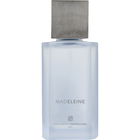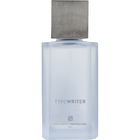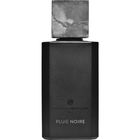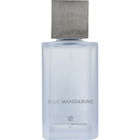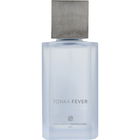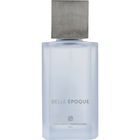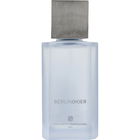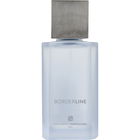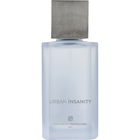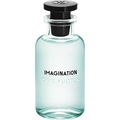Jennifer in Paradise.tif is the name of a digital image that was used by John Knoll in 1987 for the first demonstration purposes of Photoshop© software. The image shows Knoll's girlfriend sitting on the sandy beach of the Pacific island Bora Bora, and it serves as source material for what has now become fundamental applications of digital image editing, such as copying and repeatedly inserting image sections (here Knoll's partner or a neighboring island), etc. 'Jennifer in Paradise.tif' is thus set to go down in history as the first officially manipulated image with Photoshop©.
Around the same time, fragrances like Cool Water and Garrigue (both 1988) made the first, and already significant, announcements of what would soon be referred to in the perfume vernacular as Aquatic. With New West for her, Ocean Rain (both 1990), or Kenzo pour Homme (1991), further 'early' highlights appeared. After that, it quickly became overwhelming, and the flood of aquatic fragrances was hardly stoppable; it even seemed that there were moments when non-aquatic scents were the exception. Perhaps this is also one of the reasons why aquatic perfumes have sometimes struggled since then; hardly any genre is so fervently criticized and frowned upon as Aquatic. In its beginnings, however, Aquatic was primarily one thing: different. A break with many codes that were established in the 70s and 80s and which are gaining momentum again in the current retro-mania of fragrances. Perhaps perfumes like the aforementioned Skinscent for Her didn’t even want to smell oceanic, Atlantic, or Pacific, but simply 'different'?
Even though I can’t relate much to the majority of these fragrances, the idea that a trend was emerging here, moving away from fauna and flora and capturing more of an element and a mood, remains remarkable. Of course, there were isolated and very different solitaires that attempted something similar: Après L'Ondée (1906 - an entire garden including rain showers), L'Eau Trois (1975 - an island with cult sites in the Mediterranean), or Fahrenheit (1985 - texture, atmosphere, fire), but nowhere was it pursued as consistently as with aquatic fragrances. For me, this mostly went wrong; the releases fluctuate between overly sweetened artificiality or overly realistic landscape scents that could just as easily come from a final exam at one of the great perfume schools.
Perhaps this is why a considerable number of remarkable fragrances gather at the edge of the aquatic, all somehow flirting with this history, and contributing something to the discourse precisely through their position at the periphery. This is where The Saint Mariner comes into play, a perfume that unabashedly presents its maritime character right in its name (in its full form The Saint Mariner - Pietro Sedda, the Italian tattoo artist who designed the motifs of all Particulieres).
These aspects remain shallow here for now; a beach in Sardinia (Spiaggia di Maimoni) must serve as a geographical coordinate, white coral sand, visually not unlike the scene in the 'Jennifer in Paradise.tif' image. The water is certainly over 20 degrees Celsius, reaching up to the knees, soft sand, no waves. In comparison, Ocean Rain or Kenzo pour Homme are high-seas adventures with swells and wind strength.
More than Aquatic merely in the sense of sea sounds and beach debris hallucinations, The Saint Mariner delves into a similarly loaded territory of 'functional citrus' - that is, those often indistinct agrume notes that like to find their way into household or industrial cleaning products due to their potency and effectiveness. The comparison made here by Jilly to 'WC Ente exklusiv' is not entirely off the mark.
In recent decades, as the names of the respective people behind the fragrances have crept into press releases via author perfumery, functional perfumery remains a profoundly anonymous field. None of these products reveal who is behind the scent design. Old masters, research perfumers, apprentices? A perfume that flirted early and quite clearly with this category is Comme des Garçons' Soda (2004) from the 'Synthetic Series', with its extreme power-house citrus/ginger blend, originally presented in a transparent plastic bottle, with the liquid in a plastic bag - and a spray mechanism that had many times the average 'through-put'. This deliberately artificial and all-pervasive citrus note is repeatedly referenced, for example in Humięcki & Graef's Eau Radieuse, or more widely in Jacque Polge's Allure Homme Édition Blanche (both 2008) - particularly its creamy citrus (minus any tonka/vanilla base) comes close to The Saint Mariner. Other reference points also include Eau Sauvage Cologne (2015) or the 'high impact' Symrise citrus note from Andy Warhol's You're In (2017) - temporally in the other direction, Versace's creamy Versus Uomo (1991), Yves Saint Laurent's pour Homme (1971), or the great English lime fragrances like West Indian Limes or West Indian Extract of Limes (date unknown) could serve.
Some of the older fragrances mentioned here certainly have a proper development; the power citrus note is just one of many - The Saint Mariner, fitting to its age, primarily sets a chord and executes it very convincingly: a penetrating, increasingly sweet but always abstract and unabashedly artificial citrus fruit, washed over by lightly foaming seawater, with just a hint of pink pepper, the fruit of the Schinus tree, being recognizable. A well-integrated overall impression where I can hardly discern shades of individual notes. But that underscores its industrial-functional charm even more. Consequently, Parfumerie Particulière could have also done without a supposed notes pyramid. In the spirit of Series 6: Synthetic, the line that I see as one of the references for the team behind Parfumerie Particulière. Type Writer and Black Tar are not only close in name to Tar and Garage (both 2004), I place Pluie Noire alongside Dry Clean (2004) and The Saint Mariner, right next to the aforementioned Soda. Originally, no notes pyramid was communicated for Series 6: Synthetic; it was cryptically stated in a Kawakubo manner as 'man-made' scents, Parfumerie Particulière could have easily stood this step.
Not quite as self-absorbed as Pluie Noire, the other borderline aquatic perfume from the brand, The Saint Mariner hasn’t captivated me; it’s a tad too shallow for that, but the almost industrial-functional citrus note is indeed excellently executed here. Whether it ultimately requires the whole as an Extrait de Parfum of 100ml remains another question; I see it more as a consensus, trying to keep up with the hardly avoidable Eau de Parfumization, alongside the increasing Extrait de Parfumization.









 Rosemary
Rosemary Ambroxan
Ambroxan Bergamot
Bergamot Pink pepper
Pink pepper Vetiver
Vetiver Elemi resin
Elemi resin Floralozone
Floralozone Iodine
Iodine Rum
Rum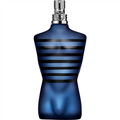




 PedroCabral
PedroCabral BoBoChamp
BoBoChamp Profumo
Profumo Robbenbingo
Robbenbingo Anor8k
Anor8k Rieke2021
Rieke2021 Dan93
Dan93 Ischgelroi
Ischgelroi Gürteltier
Gürteltier Mocbeth
Mocbeth
